541 low relevance results shown for 'Red'. Prev |1|2|3|4|5|6|7|8|9|10|11|12|13|14|15|16|17|18|19|20|21|22 | Next | View 100 per page
Showing low relevance matches only. Return to normal search results
DNA - The transmission of heritable characteristics from one generation to the next involves DNA and genes ACSSU097 Year 6 Physical Sciences
Electrical Circuits - Electrical energy can be transferred and transformed in electrical circuits and can be generated from a range of sources ACSSU115 Year 7 Earth and Space Sciences
Earth Moon Sun - Predictable phenomena on Earth, including seasons and eclipses, are caused by the relative positions of the sun, Earth and the moon ACSSU229 Year 10 Physical Sciences
Forces and Motion - The motion of objects can be described and predicted using the laws of physics ACSBL029 Year 11 Biodiversity and the interconnectedness of life
Ecosystem dynamics - Models of ecosystem interactions (for example, food webs, successional models) can be used to predict the impact of change and are based on interpretation of and extrapolation from sample data (for example, data derived from ecosystem surveying techniques ACSBL085 Year 12 Heredity and continuity of life
DNA genes and the continuity of life - Frequencies of genotypes and phenotypes of offspring can be predicted using probability models, including Punnett squares, and by taking into consideration patterns of inheritance, including the effects of dominant, autosomal and sex-linked alleles and mu ACSBL090 Year 12 Heredity and continuity of life
Continuity of life on Earth - Natural selection occurs when selection pressures in the environment confer a selective advantage on a specific phenotype to enhance its survival and reproduction; this results in changes in allele frequency in the gene pool of a population ACSBL091 Year 12 Heredity and continuity of life
Continuity of life on Earth - In additional to environmental selection pressures, mutation, gene flow and genetic drift can contribute to changes in allele frequency in a population gene pool and results in microevolutionary change ACSCH056 Year 11 Molecular interactions and reactions
Intermolecular forces and gases - The shapes of molecules can be explained and predicted using three dimensional representations of electrons as charge clouds and using valence shell electron pair repulsion (VSEPR) theory ACSCH073 Year 11 Molecular interactions and reactions
Rates of chemical reactions - Catalysts, including enzymes and metal nanoparticles, affect the rate of certain reactions by providing an alternative reaction pathway with a reduced activation energy, hence increasing the proportion of collisions that lead to a chemical change ACSCH091 Year 12 Equilibrium acids and redox reactions
Chemical equilibrium systems - Over time, physical changes and reversible chemical reactions reach a state of dynamic equilibrium in a closed system, with the relative concentrations of products and reactants defining the position of equilibrium ACSCH096 Year 12 Equilibrium acids and redox reactions
Chemical equilibrium systems - Equilibrium position can be predicted qualitatively using equilibrium constants ACSCH097 Year 12 Equilibrium acids and redox reactions
Chemical equilibrium systems - Acids are substances that can act as proton (hydrogen ion) donors and can be classified as monoprotic or polyprotic depending on the number of protons donated by each molecule of the acid ACSCH098 Year 12 Equilibrium acids and redox reactions
Chemical equilibrium systems - The strength of acids is explained by the degree of ionisation at equilibrium in aqueous solution, which can be represented with chemical equations and equilibrium constants (Ka) ACSCH099 Year 12 Equilibrium acids and redox reactions
Chemical equilibrium systems - The relationship between acids and bases in equilibrium systems can be explained using the Brønsted Lowry model and represented using chemical equations that illustrate the transfer of hydrogen ions ACSCH100 Year 12 Equilibrium acids and redox reactions
Chemical equilibrium systems - The pH scale is a logarithmic scale and the pH of a solution can be calculated from the concentration of hydrogen ions; Kw can be used to calculate the concentration of hydrogen ions from the concentration of hydroxide ions in a solution ACSCH101 Year 12 Equilibrium acids and redox reactions
Chemical equilibrium systems - Acidbase indicators are weak acids or bases where the acidic form is of a different colour to the basic form ACSCH102 Year 12 Equilibrium acids and redox reactions
Chemical equilibrium systems - Volumetric analysis methods involving acidbase reactions rely on the identification of an equivalence point by measuring the associated change in pH, using chemical indicators or pH meters, to reveal an observable end point ACSCH103 Year 12 Equilibrium acids and redox reactions
Oxidation and reduction - A range of reactions, including displacement reactions of metals, combustion, corrosion, and electrochemical processes, can be modelled as redox reactions involving oxidation of one substance and reduction of another substance ACSCH104 Year 12 Equilibrium acids and redox reactions
Oxidation and reduction - Oxidation can be modelled as the loss of electrons from a chemical species, and reduction can be modelled as the gain of electrons by a chemical species; these processes can be represented using half equations ACSCH106 Year 12 Equilibrium acids and redox reactions
Oxidation and reduction - The relative strength of oxidising and reducing agents can be determined by comparing standard electrode potentials ACSCH107 Year 12 Equilibrium acids and redox reactions
Oxidation and reduction - Electrochemical cells, including galvanic and electrolytic cells, consist of oxidation and reduction half reactions connected via an external circuit that allows electrons to move from the anode (oxidation reaction) to the cathode (reduction reaction) ACSCH108 Year 12 Equilibrium acids and redox reactions
Oxidation and reduction - Galvanic cells, including fuel cells, generate an electrical potential difference from a spontaneous redox reaction; they can be represented as cell diagrams including anode and cathode halfequations ACSCH110 Year 12 Equilibrium acids and redox reactions
Oxidation and reduction - Cell potentials at standard conditions can be calculated from standard electrode potentials; these values can be used to compare cells constructed from different materials ACSCH130 Year 12 Structure synthesis and design
Properties and structure of organic materials - Data from analytical techniques, including mass spectrometry, xray crystallography and infrared spectroscopy, can be used to determine the structure of organic molecules, often using evidence from more than one technique ACSPH040 Year 11 Thermal nuclear and electrical physics
Electrical circuits - The energy available to charges moving in an electrical circuit is measured using electric potential difference, which is defined as the change in potential energy per unit charge between two defined points in the circuit ACSPH041 Year 11 Thermal nuclear and electrical physics
Electrical circuits - Energy is required to separate positive and negative charge carriers; charge separation produces an electrical potential difference that can be used to drive current in circuits ACSPH061 Year 11 Linear Motion and Waves
Linear motion and force - Representations, including graphs and vectors, and/or equations of motion, can be used qualitatively and quantitatively to describe and predict linear motion ACSPH064 Year 11 Linear Motion and Waves
Linear motion and force - Momentum is a property of moving objects; it is conserved in a closed system and may be transferred from one object to another when a force acts over a time interval ACSPH065 Year 11 Linear Motion and Waves
Linear motion and force - Energy is conserved in isolated systems and is transferred from one object to another when a force is applied over a distance; this causes work to be done and changes to kinetic and/or potential energy of objects ACSPH073 Year 11 Linear Motion and Waves
Waves - A mechanical system resonates when it is driven at one of its natural frequencies of oscillation; energy is transferred efficiently into systems under these conditions ACSPH076 Year 11 Linear Motion and Waves
Waves - A wave model explains a wide range of lightrelated phenomena including reflection, refraction, total internal reflection, dispersion, diffraction and interference; a transverse wave model is required to explain polarisation ACSPH021 Year 11 Thermal nuclear and electrical physics
Heating processes - Change of state involves internal energy changes to form or break bonds between atoms or molecules; latent heat is the energy required to be added to or removed from a system to change the state of the system
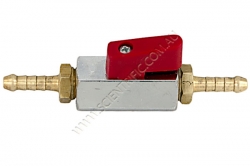
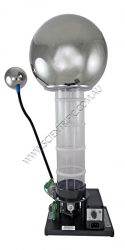
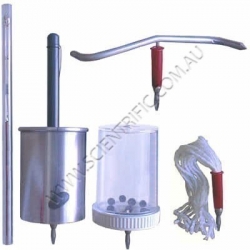
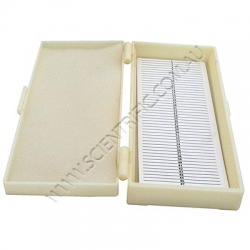
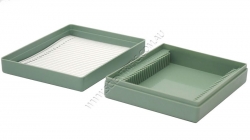
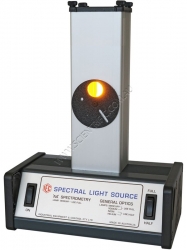
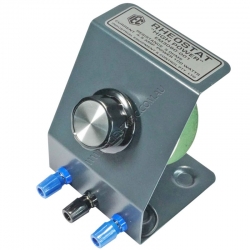
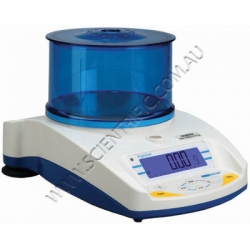
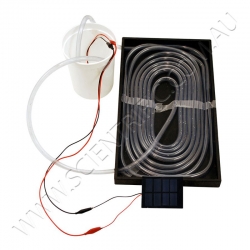
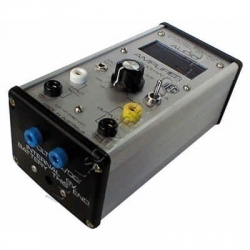
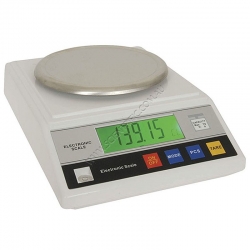
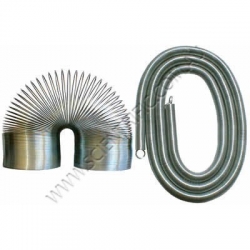
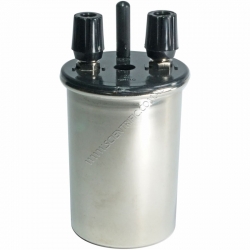
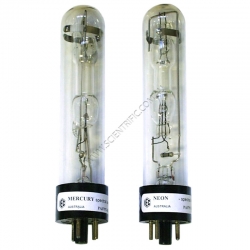
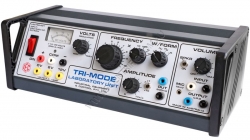






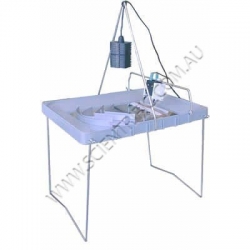
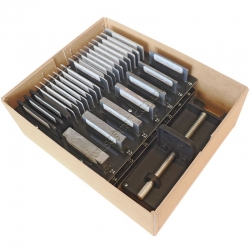
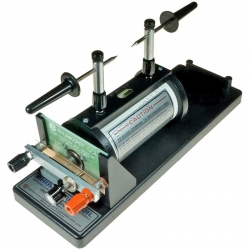
541 low relevance results shown for 'Red'. Prev |1|2|3|4|5|6|7|8|9|10|11|12|13|14|15|16|17|18|19|20|21|22 | Next | View 100 per page
Showing low relevance matches only. Return to normal search results
Curriculum resources related to 'Red'
ACSSU184 Year 10 Biological SciencesDNA - The transmission of heritable characteristics from one generation to the next involves DNA and genes ACSSU097 Year 6 Physical Sciences
Electrical Circuits - Electrical energy can be transferred and transformed in electrical circuits and can be generated from a range of sources ACSSU115 Year 7 Earth and Space Sciences
Earth Moon Sun - Predictable phenomena on Earth, including seasons and eclipses, are caused by the relative positions of the sun, Earth and the moon ACSSU229 Year 10 Physical Sciences
Forces and Motion - The motion of objects can be described and predicted using the laws of physics ACSBL029 Year 11 Biodiversity and the interconnectedness of life
Ecosystem dynamics - Models of ecosystem interactions (for example, food webs, successional models) can be used to predict the impact of change and are based on interpretation of and extrapolation from sample data (for example, data derived from ecosystem surveying techniques ACSBL085 Year 12 Heredity and continuity of life
DNA genes and the continuity of life - Frequencies of genotypes and phenotypes of offspring can be predicted using probability models, including Punnett squares, and by taking into consideration patterns of inheritance, including the effects of dominant, autosomal and sex-linked alleles and mu ACSBL090 Year 12 Heredity and continuity of life
Continuity of life on Earth - Natural selection occurs when selection pressures in the environment confer a selective advantage on a specific phenotype to enhance its survival and reproduction; this results in changes in allele frequency in the gene pool of a population ACSBL091 Year 12 Heredity and continuity of life
Continuity of life on Earth - In additional to environmental selection pressures, mutation, gene flow and genetic drift can contribute to changes in allele frequency in a population gene pool and results in microevolutionary change ACSCH056 Year 11 Molecular interactions and reactions
Intermolecular forces and gases - The shapes of molecules can be explained and predicted using three dimensional representations of electrons as charge clouds and using valence shell electron pair repulsion (VSEPR) theory ACSCH073 Year 11 Molecular interactions and reactions
Rates of chemical reactions - Catalysts, including enzymes and metal nanoparticles, affect the rate of certain reactions by providing an alternative reaction pathway with a reduced activation energy, hence increasing the proportion of collisions that lead to a chemical change ACSCH091 Year 12 Equilibrium acids and redox reactions
Chemical equilibrium systems - Over time, physical changes and reversible chemical reactions reach a state of dynamic equilibrium in a closed system, with the relative concentrations of products and reactants defining the position of equilibrium ACSCH096 Year 12 Equilibrium acids and redox reactions
Chemical equilibrium systems - Equilibrium position can be predicted qualitatively using equilibrium constants ACSCH097 Year 12 Equilibrium acids and redox reactions
Chemical equilibrium systems - Acids are substances that can act as proton (hydrogen ion) donors and can be classified as monoprotic or polyprotic depending on the number of protons donated by each molecule of the acid ACSCH098 Year 12 Equilibrium acids and redox reactions
Chemical equilibrium systems - The strength of acids is explained by the degree of ionisation at equilibrium in aqueous solution, which can be represented with chemical equations and equilibrium constants (Ka) ACSCH099 Year 12 Equilibrium acids and redox reactions
Chemical equilibrium systems - The relationship between acids and bases in equilibrium systems can be explained using the Brønsted Lowry model and represented using chemical equations that illustrate the transfer of hydrogen ions ACSCH100 Year 12 Equilibrium acids and redox reactions
Chemical equilibrium systems - The pH scale is a logarithmic scale and the pH of a solution can be calculated from the concentration of hydrogen ions; Kw can be used to calculate the concentration of hydrogen ions from the concentration of hydroxide ions in a solution ACSCH101 Year 12 Equilibrium acids and redox reactions
Chemical equilibrium systems - Acidbase indicators are weak acids or bases where the acidic form is of a different colour to the basic form ACSCH102 Year 12 Equilibrium acids and redox reactions
Chemical equilibrium systems - Volumetric analysis methods involving acidbase reactions rely on the identification of an equivalence point by measuring the associated change in pH, using chemical indicators or pH meters, to reveal an observable end point ACSCH103 Year 12 Equilibrium acids and redox reactions
Oxidation and reduction - A range of reactions, including displacement reactions of metals, combustion, corrosion, and electrochemical processes, can be modelled as redox reactions involving oxidation of one substance and reduction of another substance ACSCH104 Year 12 Equilibrium acids and redox reactions
Oxidation and reduction - Oxidation can be modelled as the loss of electrons from a chemical species, and reduction can be modelled as the gain of electrons by a chemical species; these processes can be represented using half equations ACSCH106 Year 12 Equilibrium acids and redox reactions
Oxidation and reduction - The relative strength of oxidising and reducing agents can be determined by comparing standard electrode potentials ACSCH107 Year 12 Equilibrium acids and redox reactions
Oxidation and reduction - Electrochemical cells, including galvanic and electrolytic cells, consist of oxidation and reduction half reactions connected via an external circuit that allows electrons to move from the anode (oxidation reaction) to the cathode (reduction reaction) ACSCH108 Year 12 Equilibrium acids and redox reactions
Oxidation and reduction - Galvanic cells, including fuel cells, generate an electrical potential difference from a spontaneous redox reaction; they can be represented as cell diagrams including anode and cathode halfequations ACSCH110 Year 12 Equilibrium acids and redox reactions
Oxidation and reduction - Cell potentials at standard conditions can be calculated from standard electrode potentials; these values can be used to compare cells constructed from different materials ACSCH130 Year 12 Structure synthesis and design
Properties and structure of organic materials - Data from analytical techniques, including mass spectrometry, xray crystallography and infrared spectroscopy, can be used to determine the structure of organic molecules, often using evidence from more than one technique ACSPH040 Year 11 Thermal nuclear and electrical physics
Electrical circuits - The energy available to charges moving in an electrical circuit is measured using electric potential difference, which is defined as the change in potential energy per unit charge between two defined points in the circuit ACSPH041 Year 11 Thermal nuclear and electrical physics
Electrical circuits - Energy is required to separate positive and negative charge carriers; charge separation produces an electrical potential difference that can be used to drive current in circuits ACSPH061 Year 11 Linear Motion and Waves
Linear motion and force - Representations, including graphs and vectors, and/or equations of motion, can be used qualitatively and quantitatively to describe and predict linear motion ACSPH064 Year 11 Linear Motion and Waves
Linear motion and force - Momentum is a property of moving objects; it is conserved in a closed system and may be transferred from one object to another when a force acts over a time interval ACSPH065 Year 11 Linear Motion and Waves
Linear motion and force - Energy is conserved in isolated systems and is transferred from one object to another when a force is applied over a distance; this causes work to be done and changes to kinetic and/or potential energy of objects ACSPH073 Year 11 Linear Motion and Waves
Waves - A mechanical system resonates when it is driven at one of its natural frequencies of oscillation; energy is transferred efficiently into systems under these conditions ACSPH076 Year 11 Linear Motion and Waves
Waves - A wave model explains a wide range of lightrelated phenomena including reflection, refraction, total internal reflection, dispersion, diffraction and interference; a transverse wave model is required to explain polarisation ACSPH021 Year 11 Thermal nuclear and electrical physics
Heating processes - Change of state involves internal energy changes to form or break bonds between atoms or molecules; latent heat is the energy required to be added to or removed from a system to change the state of the system
Products related to 'Red'

Vacuum Pump Shut Off Valve
Designed for use with our vacuum pumps.
A mini shut-off valve is fitted in a metre of 6mm ID hose. One hose-end has a connector for screwing onto the vacuum pump. The other end can be connected to equipment terminated in a 6mm (1/4") barbed hose-tail.
Use to maintain vacuum...
Order code: SC1040

IEC Van de Graaff Generator 400kV Variable Speed
IEC VAN DE GRAAFF GENERATOR LARGE 250mm DIAMETER DOME 400kV.
This VDG is now IEC's standard "Large" model Van de Graaff. The 250mm diameter ball is a good size and is in proportion to the rest of the instrument's construction.
It is a modern, compact and robust instrum...
Order code: EM4134-101

Van de Graaff Accessory Kit
Manufactured by and only available from Scientrific. A set of seven accessories for use with the Staticsphere and other Van de Graaff generators
Kit contents:
• NEON LAMP in plastic tube. The neon lights in an electric field and can show the polarity of a ...
Order code: SC1002

Slide Box Plastic for 50 Microscope Slides
Stackable microscope slide box with hinged lid, holds 50 slides. Takes slides up to 76 x 26mm. Slots are well spaced for ease of use and are clearly numbered for cross referencing to the index card. Overall size: 200 x 93 x 33mm.
Order code: SC14548

Slide Box Microscope Polystyrene Fits 25
Sturdy plastic slide holder with numbered slots and index card, 122mm x 95mm x 33mm, holds 25 slides.
Order code: SC7220
Slide Box Microscope Polystyrene Fits 100
Sturdy plastic slide holder with numbered slots and index card, fits 100 slides.
Order code: SC7221

IEC Sodium Lamp and Power Supply for Spectrometer and AA Experiments
IEC SODIUM LAMP AND POWER SUPPLY
This low cost IEC Power Supply and Sodium Lamp is a compact and self contained instrument that is an excellent sodium light source for conducting Atomic Absorption (AA) experiments with the CH3792-001 IEC Flame Emission Spectrometer. The s...
Order code: CH3792-125

IEC Rheostat/Potentiometer Rotary Wire Wound 100W 5Ω 4.5A
IEC RHEOSTAT ROTARY WIRE WOUND 100W 5ohm 4.5A
The IEC Rotary Rheostat / Potentiometer is for low resistance and high power. It is useful in the classroom where larger currents are required.
Resistance is 5 ohms and power dissipation is 100 watts. This calculates to a p...
Order code: EM3080-001

Adam Electronic Balance 120g x 0.001g
ADAM PORTABLE ELECTRONIC PRECISION BALANCE 120g x 0.001g
A versatile, portable, stackable balance suitable for use in laboratories or the field. The HandiCal™ internal calibration weight provides incredibly easy calibration without the need for external calibration wei...
Order code: HCB 123
| Purchase QTY: (Each) | 1+ |
|---|---|
| Base price | $700.00 |
| Scientrific's price | $672.00 |
| Educational special | $560.00 |
| CLICK FOR QTY PRICING | |
| Prices exclude GST and freight | |

KidWind Solar Thermal Exploration Kit
KIDWIND SOLAR THERMAL EXPLORATION KIT
The Solar Thermal Exploration Kit is modeled on a domestic solar water heating system. Explore variables such as box colour, light intensity, tube design, rate of water pumping and amount of time it takes to heat the water. Learn abou...
Order code: KW-STXK

IEC Amplifier Audio Small 12V AC/D and Battery
IEC SMALL 12V AC/DC AUDIO AMPLIFIER
The IEC Audio Amplifier is a rugged instrument with inbuilt loud speaker. The input can be by 3.5mm phone jack at 15mV max., or by banana plug at 150mV max.
Output is either via loud speaker with speaker on/off switch or by 4mm socke...
Order code: LB0080-001

Electronic Balance 1000g x 0.01g
ELECTRONIC PRECISION BALANCE
A precision 1,000g (1kg) electronic balance with a resolution of 0.01g. Supplied with a wind shield and a built-in bubble level to maximise accuracy.
Use with the included mains adaptor, it can also be used with 4 AA batteries which are not inclu...
Order code: SC5052

IEC Wave Demo Spring Set
IEC WAVE DEMONSTRATION SPRING SET
The IEC Wave Demonstration Spring Set is a pair of high quality, tempered and corrosion resistant springs used to clearly and simply demonstrate wave motion to your students.
The set consists of one long thin helical spring (approxima...
Order code: SW4260-001

IEC Joule's Calorimeter Assembly with Cup Lid & Insert 2 ohm
IEC JOULE'S CALORIMETER ASSEMBLY
The IEC Joule's Calorimeter is a standard 50mmD x 75mmH copper calorimeter cup with the 'Joule's Insert' fitted.
The Joule's Insert consists of a calorimeter lid with stirrer and two 4mm banana socket supporting two conducting rods that...
Order code: HL0840-001

IEC Spectral Lamp Sodium
IEC SODIUM SPECTRAL LAMP
A sodium spectral lamp with an eight pin (octal) base. Only four pins out of the possible eight pins are used.
An external starter is not required.
The 30x140mm DxL lamp fits:
HL3794-101 Spectral Lamp Mini Power Supply and Holder Combined wi...
Order code: PA3797-102

IEC Signal Generator Tri-Mode Power Supply
IEC SIGNAL GENERATOR TRI-MODE POWER SUPPLY
The IEC Tri-Mode Signal Generator is similar to the LB3754-001 IEC Audio Oscillator/Signal Generator but with an inbuilt audio amplifier, speaker and power supply.
Many electronic experiments can be performed without need of e...
Order code: LB3758-001

IEC Spectral Lamp Mercury
IEC MERCURY SPECTRAL LAMP
A mercury spectral lamp with an eight pin (octal) base. Only four pins out of the possible eight pins are used.
An external starter is not required.
The 30x140mm DxL lamp fits:
HL3794-101 Spectral Lamp Mini Power Supply and Holder Combined ...
Order code: PA3797-101

IEC Spectral Lamp Neon
IEC NEON SPECTRAL LAMP
A neon spectral lamp with an eight pin (octal) base. Only four pins out of the possible eight pins are used.
An external starter is not required.
The 30x140mm DxL lamp fits:
HL3794-101 Spectral Lamp Mini Power Supply and Holder Combined without...
Order code: PA3797-103

IEC Spectral Lamp Helium
IEC HELIUM SPECTRAL LAMP
A helium spectral lamp with an eight pin (octal) base. Only four pins out of the possible eight pins are used. An external starter is not required.
The 30x140mm DxL lamp fits:
HL3794-101 Spectral Lamp Mini Power Supply and Holder Combined with...
Order code: PA3797-104

IEC Van de Graaff Silicon Belt for all small 200kV models
IEC VAN DE GRAAFF SMALL SILICONE BELT FOR 200KV MODELS
This moulded one-piece, charge transfer belt has no join and is made from silicon rubber to reduce problems due to damp and humidity. The belt is designed for use on all IEC 200kV Van de Graaff generators (VDGs).
...
Order code: PA4137-010S

IEC Van de Graaff Silicon Belt for all large 400kV models
IEC VAN DE GRAAFF LARGE 500mm SILICONE BELT
This moulded one-piece, charge transfer belt has no join and is made from silicon rubber to reduce problems due to damp and humidity. The belt is designed for use on all IEC 400kV Van de Graaffs (VDGs).
Notes:
• This...
Order code: PA4138-010S

Spin Rim
Spin Rim
High Performance!
Amazing Tricks!
Incredible Flights!
Throw Spin Rim™ like a flying disc or grab it by the tail, spin it and create amazing tricks!
Order code: SR001

IEC Ripple Tank and Full Kit with Illuminator and Rippler
No longer availble, some part are still available.
Complete Ripple Tank with lamp and an adjustable speed 3 volt ripple generator. Robust and lightweight tank made of high impact plastic, fitted with a distortion free plate glass bottom. With height adjustable foldaway legs to suit application or can be used directly over an over... Order code: SW3430-001
Complete Ripple Tank with lamp and an adjustable speed 3 volt ripple generator. Robust and lightweight tank made of high impact plastic, fitted with a distortion free plate glass bottom. With height adjustable foldaway legs to suit application or can be used directly over an over... Order code: SW3430-001

IEC Absorber Set of 24 with Holder
IEC ABSORBER SET WITH HOLDER FOR RADIATION STUDY
A set of 24 absorbers, packed in a stout card box with dividers.
Absorbers are used to study the absorption of radioactive energies. Thicknesses range from tissue paper and very thin aluminium foils for Alpha particle a...
Order code: AP0030-001

IEC Induction - Rhumkorff Coil 25mm Spark 12V DC
IEC RHUMKORFF COIL 25mm SPARK 12V DC
The IEC Rhumkorff Coil or Induction/Spark Coil is used to provide a very high output voltage to drive external equipment like Spectrum Tubes and Cathode Ray Tubes. The unit has tungsten vibrating points and a high quality capacitor to ...
Order code: EM3450-001
541 low relevance results shown for 'Red'. Prev |1|2|3|4|5|6|7|8|9|10|11|12|13|14|15|16|17|18|19|20|21|22 | Next | View 100 per page



 ,
,